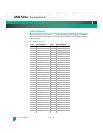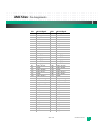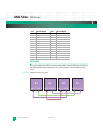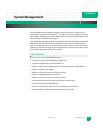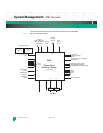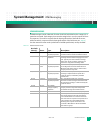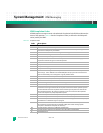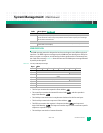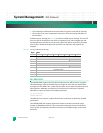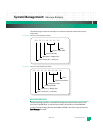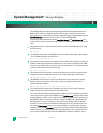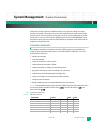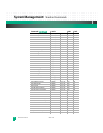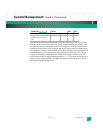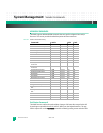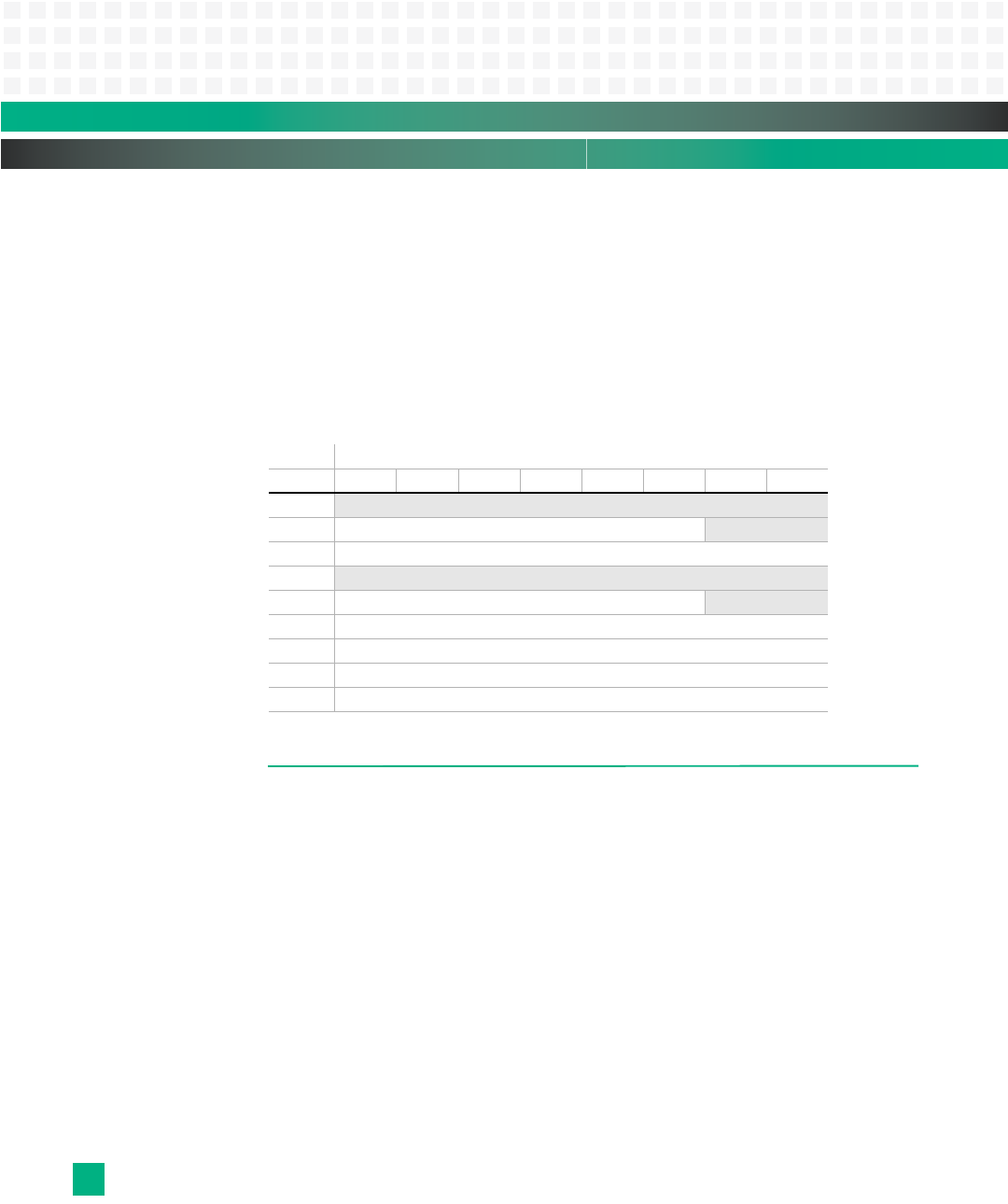
System Management: SIPL Protocol
KAT4000 User’s Manual 10007175-02
9-6
• The seventh byte and beyond contain parameters for specific commands (if required).
• The final byte is the two’s-complement checksum of all of the message data after the
first checksum.
An IPMI response message (see
Tab le 9 -4 ) is similar to a IPMI request message. The main dif-
ference is that the seventh byte contains the Completion Code, and the eighth byte and
beyond hold data received from the controller (rather than data to send to the controller).
Also, the Slave Address and Logical Unit Number for the requester and responder are
swapped.
Table 9-4: Format for IPMI Response Message
SIPL PROTOCOL
The KAT4000 IPMC supports the Serial Interface Protocol Lite (SIPL) protocol. It supports
raw IPMI messages in SIPL and handles these messages the same way as it handles IPMI
messages from the IPMB-O bus, except that the replies route to either the payload or serial
debug interface. Messages are entered as case-insensitive hex-ASCII pairs, separated
optionally by a space, as shown in the following examples:
[18 00 22]<newline>
[180022]<newline>
The IPMC does not, however, support SIPL ASCII text commands, as defined by the IPMI
specification.
The KAT4000 IPMC does support Pigeon Point Systems extension commands, imple-
mented as OEM IPMI commands. These commands use Network Function Codes 2E/2F
(hex), and the message body is transferred similarly to raw IPMI messages, as described
previously.
Byte: Bits:
76543210
1
rqSA
2
netFn rqLUN
3
Checksum
4
rsSA
5
rsSeq rsLUN
6
Command
7
Completion Code
8:N
Data
N+1
Checksum



